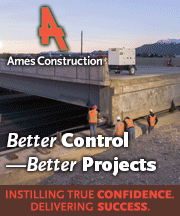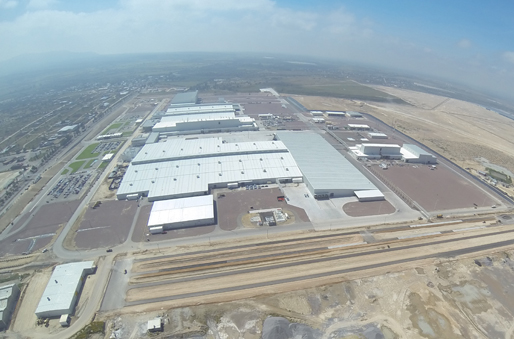
An A/E Perspective on Optimizing the Design-Build Strategy
by Matthew Oberts, PE, LEED AP, SSOE Group
When it comes to winning a design-build competition and pursuing the resulting contract, the level of trust and teamwork that can be achieved between the design side (architects & engineers) and the build side (construction contractors) is truly what makes or breaks the project. Inter-team communication is thus critical in design-build projects, and the vehicle for early communication between teams today is the design charrette. The term dates back to the French word for “chariot” or “cart” at a time when student architects worked together tirelessly to finish a project at the end of an academic term. When the deadline arrived, a charrette would be wheeled in to pick up the students’ work for review.
Today, design charrette is the name of an intensive, collaborative planning session that is held as early as possible in the life of the project. When speed to market is a critical path item, a charrette is the ideal forum to bring together the architect/engineer (A/E) and construction contracting team to put their strategic plan together.
Optimizing your next project charrette entails the following steps:
Defining the Design-Build partnership
The first and most critical steps are defining the design-build partnership and agreeing on the terms of the partners’ engagement early in the process. Make sure that both parties in the charrette agree that this will indeed be a design-build project rather than a conventional traditional design-bid-build project. This helps to ensure accurate, competitive project pricing and rework. A design-build project is most successful in achieving the project vision and objectives when it is carried out as if it were a joint venture—a true collaboration between the A/E and contracting entity. Ideally, they should have similar corporate cultures and use them to detect and remove inefficiencies.
Although it is a collaborative effort between A/E and contractor, both parties must consent to having a single, common point of responsibility for project integration and document control. The A/E usually comes to the charrette only after developing the vision, program, and objectives for the project. The A/E firm is also typically “first in” on the Virtual Design and Construction (VDC) process; specifically, the design and engineering of the key architectural, structural and mechanical-electrical systems that go into the building information model (BIM). That makes the A/E the best entity to act as the VDC integrator. But whatever the case, identifying a single entity for management of the VDC process and having a single BIM eliminates duplication of effort among the multiple firms contributing to its development.
An early challenge facing the design-build team is ensuring that the project goals match those of the contractor. To do this, the A/E can provide a bridging document, which is the formal documentation of the programming phase, during which the project vision and objectives are set forth. When studying the benefits of these documents, the Bridging Institute of America (http://bridginginstitute.org/) found that bridging documents can help to determine a firm construction price in about half the time while cutting design costs in half; save 4-5 percent or more in the cost of a fully equivalent end-product; reduce the number of contractor-initiated change orders and claims; and more quickly resolve the issues on the construction punch list.
As an example, a leading global automaker used the bridging document process to convey the project vision and goals to the entire design-build team. This facilitated the learning curve of various contractors who might be employed for successive phases of a project. The automaker also took the bridging document concept further than other companies: with the help of SSOE Group, it developed bridging documents to the 30 percent design complete phase rather than to the conventional 10 percent design complete phase. Although the A/E may develop a minimal bridging document, which only contains a plan, an elevation and a set of specifications, such a plan leaves significant uncertainty and risk on the table. Therefore, I believe if the A/E firms can develop a bridging document to 30 percent, the design-build team will have a more credible and convincing foundation for pricing.
At the outset of the project, the A/E and contractor should identify the major subcontractors on the team—specifically, the steel erectors and mechanical-electrical subcontractors—and meet with them at the charrette table. Such meetings improve pricing accuracy and competitiveness (by avoiding “commodity” pricing), emphasize appropriate design, and spell out the engineering level of detail (LOD) for each subcontractor’s needs. Finally, they confirm that subcontractors have the requisite technical capabilities and access to specified equipment.
SSOE and a leading construction firm collaborated on a design-build project for the previously noted global automaker in the Midwest. From the outset, the team selected a mechanical systems manufacturer and subcontractor. This ensured that equipment dimensions were known in advance, and it avoided a potential (and costly) redesign of steel roof frames and other components later. It avoided rework and reduced costs—including close to one percent of SSOE’s A/E fee—and avoided delays.
Identifying major subcontractors also allows the A/E to design the structural and mechanical-electrical systems at the appropriate level of detail. It’s extremely important for the A/E to know the level of detail required for each system by each of the major subcontractors up front (and these may differ from one system to another) because with this information, the A/E can set up the BIM and head off the potential delays and the costs of redesign that often occur midway through the project.
Using the Virtual Design and Construction (VDC) process and project delivery approach
Today most readers are aware that, in design-build projects, 3D BIM technology is replacing the outmoded system of printing 30- 60- and 90-percent drawings (which are out of date as soon as they come out of the printer). However, many industry leaders may not realize how underused BIM still remains. Much of BIM’s underutilized potential has been its ability to flow information throughout a project’s life cycle. VDC capitalizes on that potential.
VDC is the next evolutionary step in the way construction projects are delivered. VDC fully leverages the capabilities of multi-disciplinary models from design through construction. The conventional design-bid-build project delivery method allows each participant in the project—the A/E, lead contractor, subcontractors, and fabricators—to apply 3D/BIM to its area of accountability. However, these methods do not then follow up with 3D/BIM models throughout the course of the project. Although the A/E can develop better designs with the clash detection feature of 3D, traditional project delivery contracts still render these designs to the contractor as 2D drawings. As a result, construction companies and fabricators are forced to draw their own 3D models based on these 2D drawings.
VDC solves this problem, replacing inefficiency with integration. Its benefits include schedule compression, higher quality design and construction, cost savings, and completed projects that are much more closely aligned with design intent. With a VDC model, the need for separate as-built drawings is also eliminated because materials are procured, fabricated and installed directly from the model.
SSOE recently converted a warehouse to a new food preparation line as a model integrator high level VDC integration. The entire renovation was fabricated and constructed off site, while only erecting was done on site. This reduced the schedule to complete the project by three months.
As another example, VDC for steel fabrication takes a 3D/BIM model beyond design intent and into the design details, shop drawings, fabrication and procurement. Most readers know how a 3D model can detect clashes. However, in a VDC application the clash detection is done using the detailed design, exactly as the project is going to be built, not just in the design intent, resulting in much more powerful and accurate clash detection.
An all-encompassing model allows stakeholders to experience design from within the 3D virtual building, changing finishes and producing different views and renderings for decision-making. Integrated steel management within the model allows for shortened structural fabrication. With fabrication details housed inside the model, review time for shop drawings is reduced, expediting the steel-to-site delivery by as much as eight weeks. Energy and lighting calculations can also be extracted from the integrated virtual model, as well as other details that reduce confusion and miscommunications throughout the bid process. The VDC process is truly a game changer.
During construction, the model can be hosted by a server in the design-build trailer. It can be viewed on tablet devices by supervisors as they walk around the site and even on computer monitors set up on kiosks in the field.
Establish the risk/reward system
Setting up clear, quantifiable risk/reward metrics and spelling these out in the design-build contract helps a project to achieve its vision and goals. The design-build team is better able to develop an accurate and competitive price and avoid the cost and delays associated with change orders. Such metrics are often driven by specific project goals: if time to market is key, then the schedule is a highlight of the metrics, whereas if adherence to budget is key, then cost monitoring will drive the metrics. In either case, the stakeholders must agree the risk/reward system will work.
In one design-build project, five percent of the A/E design fee was put at risk, with the goal of keeping the errors and omissions under two percent (the A/E has a vested interest with fee at risk to ensure a quality delivery). When these performance metrics were achieved by the A/E firm, the A/E would receive 105 percent of the contract value, but, if it was not achieved, the firm would receive only 95 percent. The metrics must be quantifiable so it can be quantitatively proven whether or not the goal has been met. Reducing errors and omissions lowers the contingency costs needed by the constructor, thus lowering the cost to the owner and thereby increasing the attractiveness of using a quality A/E by the constructor/owner.
These examples have shown that when the design-build team employs a daylong charrette as the vehicle, when it uses the VDC process and project delivery approach, and when it sets up a risk/reward system, it saves time, costs and rework throughout the course of the project. Most importantly, it enables the team to achieve the shared vision and goals of the project.
Matt Oberts, PE, LEEP, is the Automotive and Industrial Division Facilities Manager at SSOE Group (www.ssoe.com), a global engineering, procurement, and construction management firm for the Facilities SBU. With 18 years of experience, Matt is responsible for the direction of 128 automotive and industrial facility engineers / architects, as well as the business unit with respect to administration and operation of all industrial and automotive client projects. His expertise includes project management and engineering, focusing on chemical, mechanical, and automotive facilities. He can be reached at 567.218.2455 or by email at Matt.Oberts@ssoe.com.








